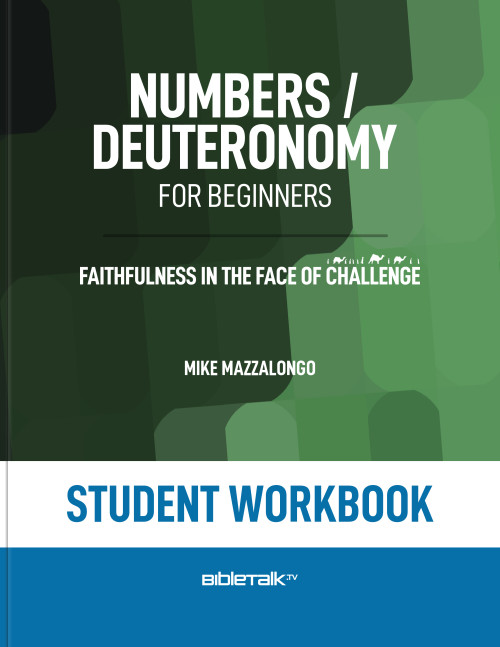Preparing to Enter the Promised Land
In this final lesson covering chapters 28-36 of Numbers we go full circle in the journey of the Israelites to the Promised Land. After their departure from Egypt, they made their way to Mt. Sinai where they spent nearly two years in preparation for their journey to the land of Canaan. We witnessed their departure and eventual plan to spy out the land in preparation to enter, remove the inhabitants and settle the land as their own.
In the previous chapter we read about the failure of the spies to bring a good report which caused a rebellion among the people and God's judgement upon them in the form of a curse that they would remain in the wilderness until every single person of that generation (except Caleb and Joshua) that refused to enter in would remain and die in the wilderness. The irony of their punishment was that it would be their children, who they had used as an excuse not to enter in, these would come into the Promised Land and not their parents.
So far we have seen the passing of the older generation of leaders as Aaron and Miriam have died and Moses will not advance with the people into Canaan and has asked God to transfer his authority over to Joshua who will be the one who will not only lead the people into the land but also lead them in the conquering, apportioning and settling of the 12 tribes in the land given to them by God.
The people are once again amassed across the river ready to cross in but unlike last time, there is no general scouting and reporting, only the real-time preparation of the people to go in and take, with God's help, the land promised to them so long ago.
Content – Numbers 28-36
Chapters 28 to 36 of the Book of Numbers contain a mix of regulations for offerings, preparations for entering Canaan, and guidelines for the distribution and governance of the Promised Land itself. These chapters effectively transition the narrative from the wilderness wanderings to the threshold of Canaan and setting the stage for their conquest and eventual settlement.
Chapter 28-29: Instructions for Daily Offerings and Festivals
Daily and Regular Offerings
Daily Offerings:
- Morning and Evening: Two lambs, one-year-old, without blemish as a burnt offering each day (Numbers 28:3-4).
Sabbath Offerings (Weekly):
Every Sabbath: In addition to the daily offerings, two additional lambs of the same specification for the burnt offering, with accompanying grain and drink offerings (Numbers 28:9-10).
Monthly Offerings (Beginning of each month, New Moon):
Monthly Burnt Offering: Two young bulls, one ram, seven male lambs (one year old, without defect) with associated grain and drink offerings. Plus one male goat for a sin offering (Numbers 28:11-15).
Annual Festivals
1. Passover (1st month, 14th day):
Special sacrifices associated with Passover.
2. Days of Unleavened Bread (1st month 15th to 21st day):
Two bulls, one ram, seven lambs (year-old and without defect) each day of the festival as a burnt offering with appropriate grain and drink offerings, and one goat for a sin offering daily (Numbers 28:16-25).
3. Feast of Weeks (Pentecost) (Date varies, 50 days post-Passover):
Single Day Festival: Two young bulls, one ram, seven one-year-old lambs (without defect) for burnt offerings, with accompanying grain and drink offerings. One goat for a sin offering (Numbers 28:26-31).
4. Feast of Trumpets (7th month, 1st day):
One young bull, one ram, seven one year-old lambs (without defect) for burnt offerings, associated grain and drink offerings. One goat for a sin offering (Numbers 29:1-6).
5. Day of Atonement (7th month, 10th day):
Atonement Offerings: One bull, one ram, seven one year-old lambs (without defect) for burnt offerings, grain and drink offerings accompanying these. One goat for a sin offering (Numbers 29:7-11).
6. Feast of Tabernacles (7th month, 15th to 21st day):
Daily Offerings (for 7 days): Numbers of bulls decrease each day from 13 to 7, while one ram and seven lambs are constant daily; all with corresponding grain and drink offerings. One goat for a sin offering daily.
By the time of Jesus, three other feasts were added to the yearly calendar:
7. The Eighth Day of Assembly (Shemini Atzeret)
Date: Tishri 23 (the day after Sukkot ends) – A separate festival immediately following Sukkot, marked by a time of assembly and prayer. It serves as a closing to the intense series of holy days.
8. The Feast of Dedication (Hanukkah)
Date: Kislev 25-Tevet 3 (Winter, November-December) – Although of later origin and not one of the pilgrim festivals, Hanukkah commemorates the rededication of the Second Temple in Jerusalem and is marked by lighting candles each night for eight nights.
9. The Feast of Lots (Purim)
Date: Adar 14 (Winter, February-March) – This feast marks the deliverance of the Jewish people from imminent doom at the hands of a Persian official as recorded in the book of Esther. It is a festive celebration that involves the reading of the Book of Esther, giving gifts, and charity.
The Maccabean Revolt: The Miracle of the Oil
After a successful guerilla war against the Seleucid Empire's forces in 167 BC, the Jewish family of the Maccabees, who led the uprising, recaptured Jerusalem and set about rededicating the Temple. Upon recapturing the Temple, the Maccabees sought to relight the menorah (a sacred candelabrum), an important ritual that symbolized the presence of God in the sanctuary. However, they found only a single cruse of pure olive oil that had not been defiled by the Greeks, bearing the seal of the high priest. This small amount of oil was sufficient for only one day.
According to tradition, the oil miraculously burned for eight days, which was the time needed to prepare and consecrate fresh oil under conditions of ritual purity.
These detailed instructions for daily worship and yearly festivals reinforced the importance of regular and seasonal worship as the Israelites prepared to settle in Canaan, ensuring that the community remained in constant communion with God.
Chapter 30: Vows
Regulations on Vows (Numbers 30:1-16)
Laws concerning the making and fulfillment of vows, particularly focusing on the vows made by women and how they are to be handled by their fathers or husbands. In the end, the men who were charged with the leadership of their families would be bound to uphold and support the completion of the vow. For this reason, they had a say in the making of a vow by the women in the family. The system also tested the involvement of the men in the affairs of the family since there were instances when their authority could be nullified. For example:
- Failure to Object Promptly: If a father hears his daughter's vow and he does not express disapproval on the day he learns of it, the vow stood and the daughter was obligated to fulfill it. Similarly, if a husband hears of his wife's vow and does not make an objection on the day he hears it, the vow remains in effect (Numbers 30:4-7).
- Inconsistency in Response: If a husband initially approves (or fails to disapprove) his wife's vow but later decides to annul it, the vow cannot be nullified after the initial period of acceptance. The husband is held accountable for any resulting iniquity due to his inconsistency or failure to annul the vow promptly (Numbers 30:8, 12, 15).
- Widowhood or Divorce: If a woman who made a vow subsequently becomes a widow or gets divorced, her vows or self-imposed obligations stand, regardless of whether her husband had previously objected. This is because his authority to nullify her vows ends with the dissolution of the marriage (Numbers 30:9).
These rules served to regulate the making and fulfillment of vows, emphasizing the importance of accountability and the integrity of one's word within the community.
Chapter 31: War against the Midianites
The destruction of the Midianites, as recounted in Numbers Chapter 31, has several reasons rooted in the narrative of the previous chapters of the Book of Numbers, particularly the incidents involving the seduction of Israelite men by Midianite women and the subsequent idolatrous worship of Baal-Peor. Here are some of the reasons behind this action:
A. Retribution for the Incident at Peor
Incitement to Idolatry: The primary reason for the conflict with Midian was their role in leading the Israelites into idolatry at Baal-Peor. In Numbers 25, Midianite women, under the counsel of Balaam, seduced Israelite men and invited them to participate in the worship of their god, Baal-Peor. This led to a severe plague from God that killed 24,000 Israelites as divine punishment for idolatry.
Divine Command for Vengeance: In Numbers 31:1-2, God specifically commands Moses to take vengeance against the Midianites for their role in the Peor incident. This divine directive is portrayed as a punitive action against the Midianites for their successful plot to curse Israel through indirect means after Balaam could not curse them directly.
B. Preventing Future Idolatry
Elimination of a Spiritual Threat: The drastic measures taken against the Midianites can also be seen as an attempt to remove a persistent source of idolatrous influence near Israel. This was crucial as Israel prepared to settle in Canaan, where they would continuously face temptations to adopt pagan practices.
Cleansing Before Entering the Promised Land: The action against Midian was part of preparing Israel to enter the Promised Land by purging them from the sinful influences that had led them astray. This cleansing was not only physical but also spiritual, emphasizing the need for holiness and fidelity to God.
C. Demonstration of Divine Justice
Upholding God's Justice: The severity of the response to Midian reflects the biblical theme of divine justice. Those who lead God's people into sin face harsh consequences, which serves as a warning to both Israel and surrounding nations.
Reaffirming God's Covenant with Israel: By carrying out God's command against Midian, Moses reaffirms Israel's special covenant relationship with God, which demanded exclusive loyalty and obedience to Him.
D. Political and Social Implications
Strategic Considerations: From a socio-political perspective, defeating Midian might have also served to enhance Israel's position among the local powers, demonstrating their might and God's backing. This would be significant in establishing Israel's place in the geopolitics of Canaan. They would be taken seriously by other nations.
Chapter 32: Settlement of the Transjordan Tribes
Request by Reuben and Gad (Numbers 32:1-42): The tribes of Reuben and Gad request to settle in the fertile lands of Gilead and Bashan, east of the Jordan River, because of their large livestock herds.
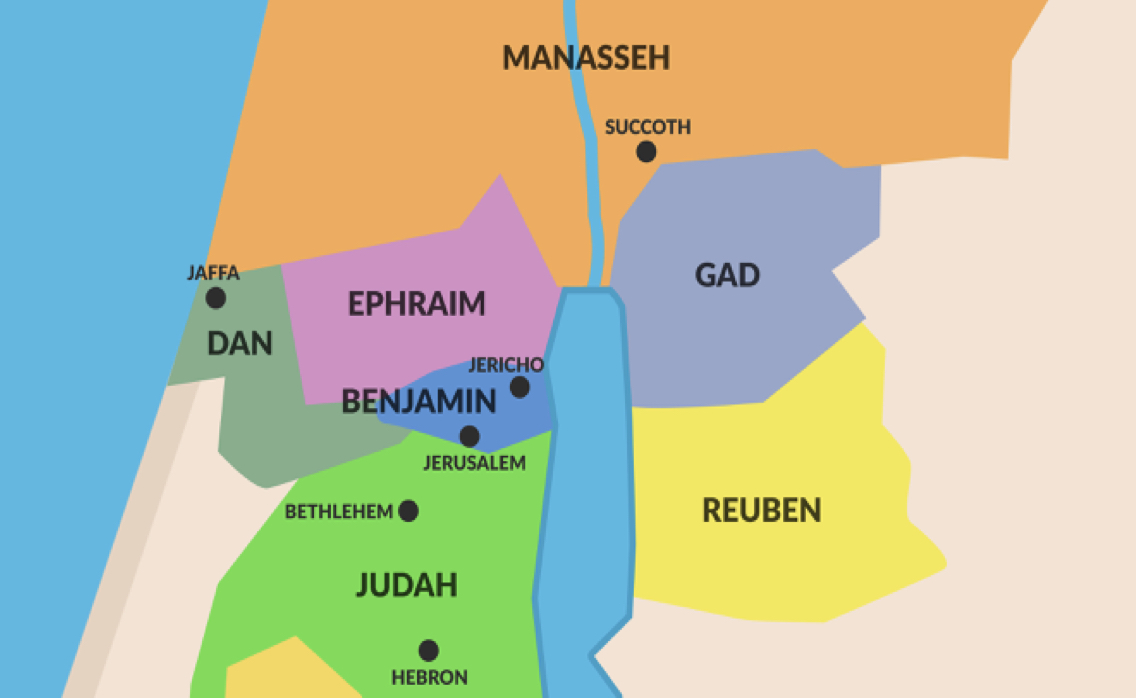
This arrangement, which includes their commitment to help conquer the land west of Jordan, illustrates themes of negotiation, responsibility, and the importance of unity in achieving common goals (different locations, one goal = tribal unity.

Chapter 33: Review of the Journey
In Numbers Chapter 33, Moses reviews the stages of the Israelites' journey from their departure from Egypt to their arrival at the plains of Moab by the Jordan River near Jericho. This retrospective is significant and serves two primary objectives:
1. It documents and legitimizes the Israelite Journey
Record Keeping: The detailed account serves as an official record of the Israelites' movements through the wilderness. This documentation is crucial not only for historical purposes but also for future generations to have a concrete account of the fulfillment of God's promises and guidance.
By listing each location where they camped, Moses provided a clear and structured itinerary that highlights the progress and the challenges faced along the way.
Affirmation of Divine Guidance: The review underscores the reality that each stage of the journey was under divine direction. The text often notes that their encampments and travels were commanded by God, reinforcing the idea that the journey, despite its difficulties and length, was part of a divine plan. This affirmation served to legitimize the leadership and the path taken, reinforcing the faith of the people in God's ongoing provision and protection. In other words, the journey was not their idea.
2. Preparation for Entering the Promised Land
Reflection and Learning: Reviewing the journey allowed the Israelites to reflect on their past experiences, the lessons learned, and the miracles witnessed. This reflection was essential for preparing them spiritually and mentally to enter the Promised Land. Understanding their history was crucial for ensuring that past mistakes were not repeated, especially those that led to God's displeasure and punishment.
Renewing Commitment: As the Israelites stood on the brink of achieving the goal set forth by their ancestors and promised by God, reviewing their journey served to renew their commitment to the covenant with God. It reminded them of their unique relationship with God and their obligations under the covenant, which would be critical as they transitioned from a nomadic existence to settling in Canaan.
Conclusion
The recounting of the journey in Numbers 33 thus serves as both a historical recapitulation and a spiritual preparation. It consolidates the narrative of the Exodus and wilderness wanderings while setting the stage for the conquest and settlement of Canaan, ensuring that the Israelites remember and draw strength from their journey under God's guidance. This chapter not only contextualizes their experiences but also reinforces their identity as God's chosen people, tasked with fulfilling a divine mandate in the land promised to their forefathers.
Chapter 34: Boundaries of Canaan
A. Geographical boundaries
Land Boundaries (Numbers 34:1-29): Precise geographical boundaries for the allocation of Canaan among the tribes. This established clear guidelines for the division of the land, underscoring the importance of orderly distribution and management of God-given resources.
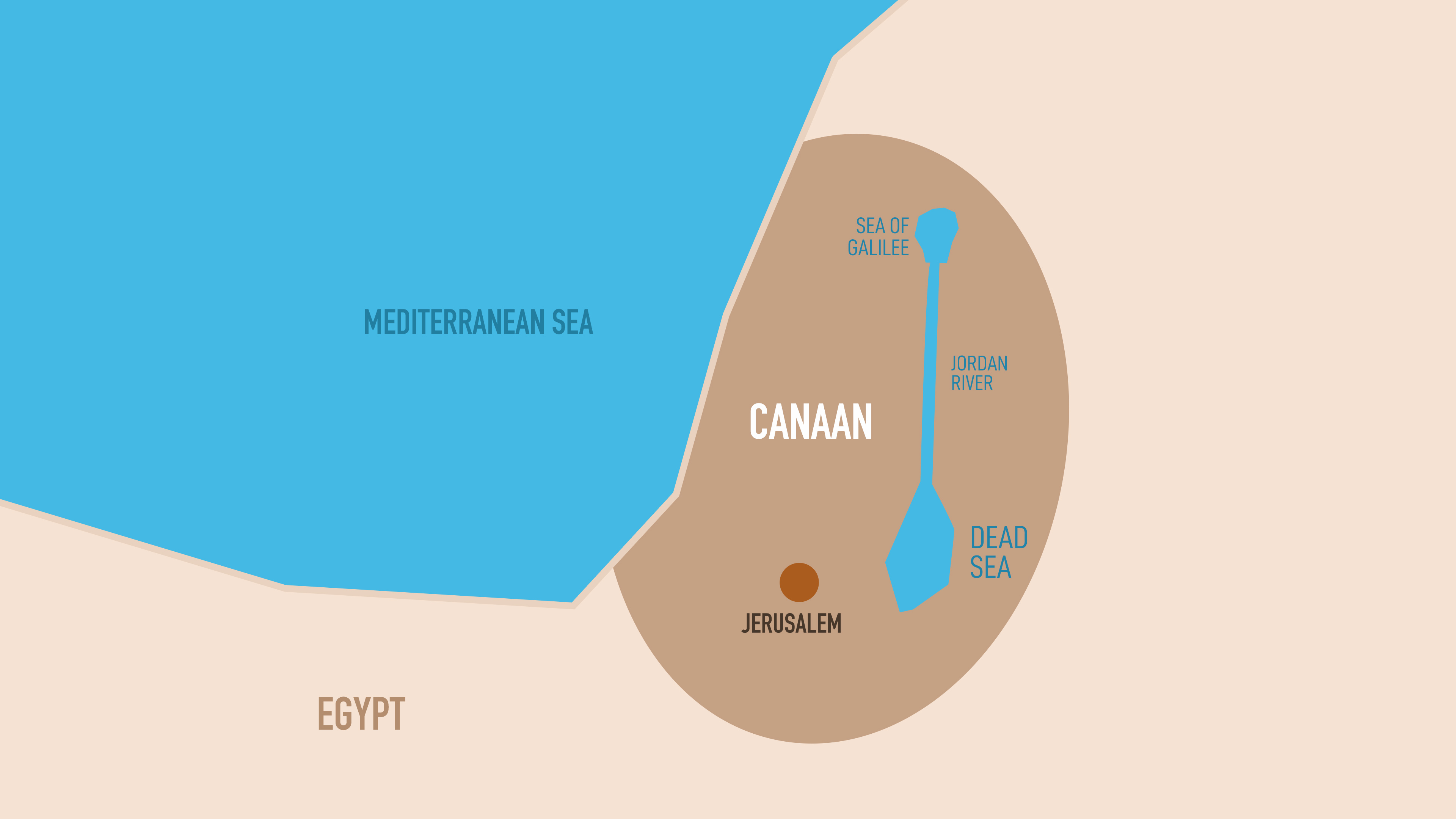
B. Division of the land Among the Tribes
Allocation by Lot: The land is to be divided by lot among the nine and a half tribes (as Reuben, Gad, and half of Manasseh have already received their inheritance on the east side of the Jordan River). This method ensures that the division is seen as directed by God's providence (Numbers 34:13).
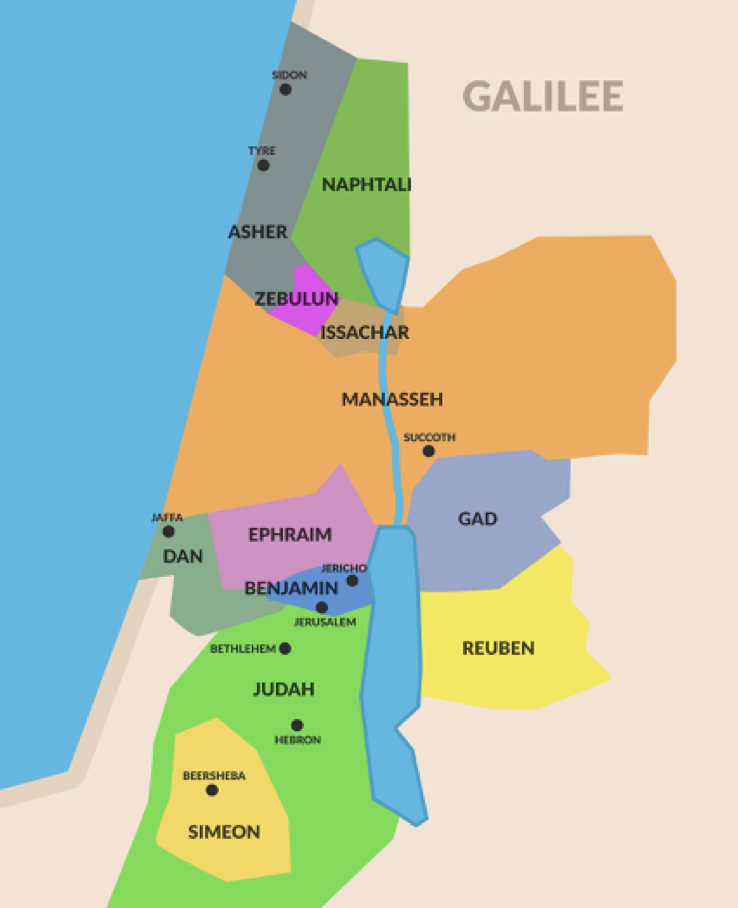
Leaders for the Allocation: Specific leaders from each tribe are appointed to oversee the distribution of the land. These leaders, one chief from each tribe, are responsible for managing the allocation process and ensuring that the boundaries for each tribe are respected (Numbers 34:17-29).
Significance
- Fair and Ordered Distribution: The detailed boundaries and the use of lots for division signify a methodical and divinely guided process, aiming to ensure each tribe received a fair portion of the land.
- Establishment of Tribal Territories: The clear demarcation of boundaries helped prevent disputes over land and established a structured setup for the newly formed Israelite nation in their promised homeland.
These guidelines not only facilitated the practical aspects of settling a nomadic people into a permanent homeland but also reinforced the importance of divine guidance and fairness in the distribution process, underscoring the covenant relationship between God and the Israelites.
Chapter 35: Levitical Cities and Cities of Refuge
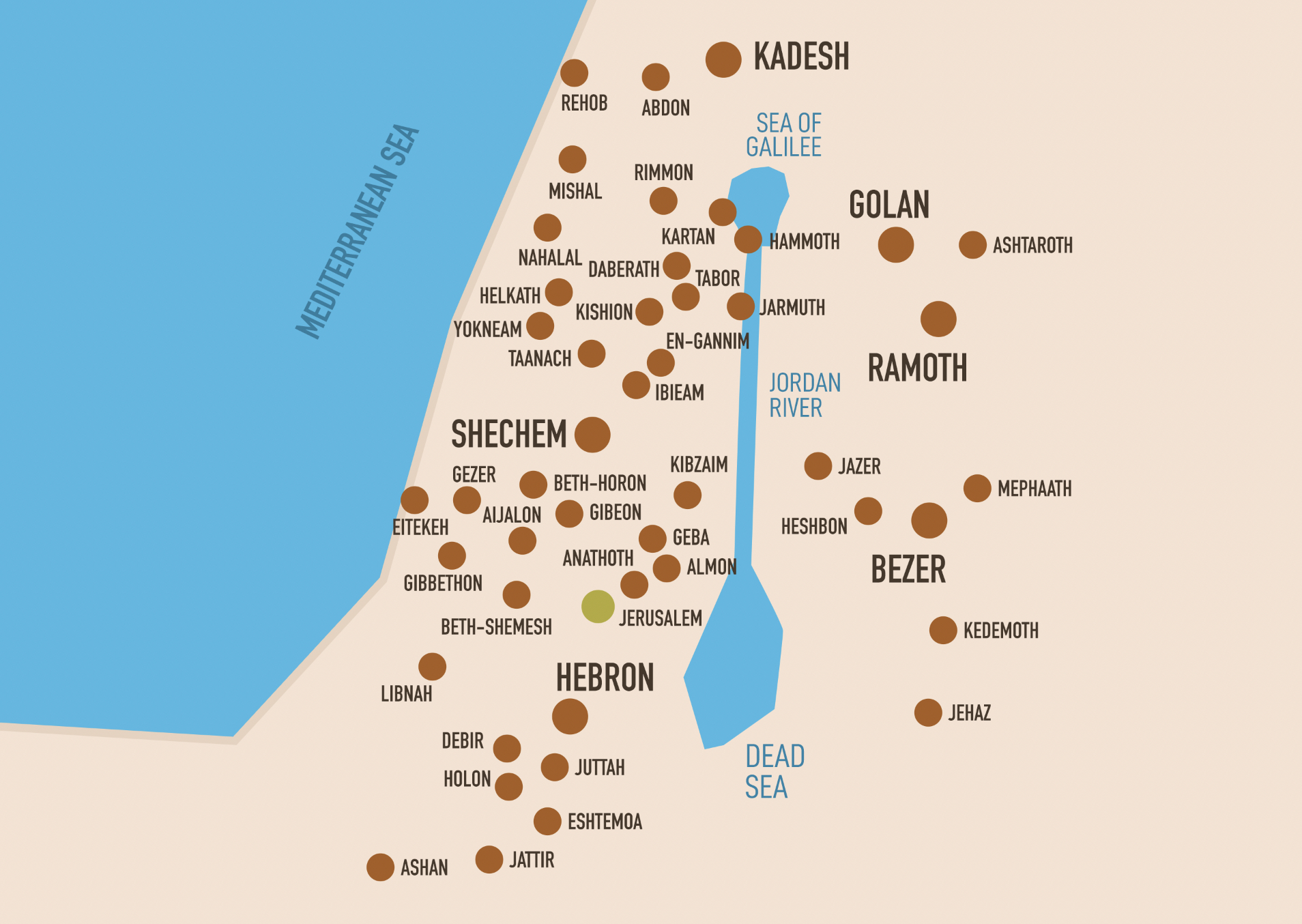
Numbers Chapter 35 provides specific guidelines for distributing the Promised Land among the tribes of Israel, focusing particularly on the allocation of cities and surrounding lands to the Levites, as well as the establishment of cities of refuge. Here is a brief summary of these guidelines:
A. Allocation of Cities to the Levites
Designation of Levitical Cities: Since the Levites were not given a distinct tribal territory like the other tribes, they were to receive 48 cities spread throughout the different tribal territories (Numbers 35:7). This distribution ensured the Levites were present across the land, fulfilling their duties in religious instruction and temple service.
Surrounding Pasturelands: Each Levitical city was to be surrounded by pasturelands, extending outward 1,000 cubits (about 500 meters) from the city walls. The pasturelands were intended for their livestock, crops, and other needs (Numbers 35:4-5).
B. Establishment of Cities of Refuge
Purpose: Six of the 48 Levitical cities were designated as cities of refuge. These cities provided asylum for individuals who had committed manslaughter unintentionally, protecting them from the avenger of blood until a fair trial could be conducted (Numbers 35:11-12).
Accessibility and Fairness: The cities of refuge were strategically chosen to be accessible to all Israelites. This placement ensured that anyone who needed to flee to a city of refuge could reach one without undue hardship.
Legal Asylum: Once inside a city of refuge, the accused had to remain there until the death of the current high priest. After the high priest's death, they could return to their original home without fear of retribution (Numbers 35:28).
C. Additional Regulations for the Manslayer
Trial and Judgment: The manslayer was required to stand trial before the community to determine the intent behind the killing. This trial ensured that the protection of the city of refuge was granted only in cases of unintentional killing (Numbers 35:24-25).
Prohibition Against Leaving the City: If the manslayer left the city of refuge before the death of the high priest, the avenger of blood could lawfully kill the offender without consequence (Numbers 35:26-27).
Conclusion
These guidelines in Numbers 35 not only facilitated the fair distribution of land and responsibilities among the Israelites but also reflected a complex understanding of justice, sanctuary, and community life. They underscored the importance of the Levites in religious and social governance, while the cities of refuge represented a sophisticated legal principle (for that time) of asylum and protection for individuals awaiting trial, ensuring the maintenance of justice and mercy in a community with no formal public security or criminal legal system.
Chapter 36: Inheritance of Zelophehad's Daughters
Marriage within the Tribe (Numbers 36:1-13)
Regulations ensuring that the inheritance of land remains within the original tribe, responding to concerns raised by the inheritance rights granted to Zelophehad's daughters. This addressed issues of property rights and inheritance, ensuring stable land ownership and the preservation of tribal identities within Israel.
These chapters end the story of the Jews' entrance into the Holy Land on a rather low key event, however, these rules collectively set the groundwork for Israel's life in Canaan, transitioning from the nomadic existence in the wilderness (which the people would not return to) to a settled and structured community in the Promised Land, which was the happy ending that all had hoped for. These laws reflect a maturation of Israel's national identity and underscore the importance of adhering to God's laws as the foundation for national wellbeing and continued divine blessings.
Lessons
1. Structured Worship and Obedience are Basic
Chapters 28 and 29 meticulously detail the daily, weekly, monthly, and annual offerings that the Israelites are to present to God. These instructions emphasize the importance of regular worship and strict adherence to God's commands as a way of sustaining a relationship with Him. This is not just an "Old Testament Thing". We need to be carefully following the instructions given to us about biblical worship today just as they followed these types of instructions back then. God still requires that we both worship and obey Him in order to maintain a relationship with Him.
2. Social Justice and Community Responsibility are Marks of the Faithful
Numbers 35 discusses the establishment of cities of refuge where individuals accused of manslaughter could seek asylum until they received a fair trial. This provision ensures that justice is balanced with mercy, protecting individuals from revenge/punishment until due process is observed. This highlights the importance of building fair systems within societies that protect the rights of all individuals, emphasizing that justice should be tempered with mercy.
3. Disobedience has consequences and Faithfulness has Rewards – Always!
Throughout the Book of Numbers, the Israelites faced numerous challenges and punishments, often as a direct consequence of their disobedience and complaints against God and Moses (e.g., the rebellion of Korah where the ground opened up and swallowed the rebels alive, not to mention the spies' negative report leading to 40 years in the wilderness). However, whenever the Israelites obeyed God (e.g., the offerings, the bronze snake), they experienced His protection and provision.
Modern Application: This overarching theme teaches us that actions have consequences, and faithfulness can lead to blessings. It encourages personal accountability and faithfulness in adhering to moral principles and ethical standards. In a broader sense, it speaks to the need for persistence in righteous behavior despite challenges or delays in seeing positive outcomes.
In the end, God always keeps His promises, for punishment or for rewards, so let's do our best to obey His word and remain faithful until the end because we too will enter the place that He has promised us:
2In My Father's house are many dwelling places; if it were not so, I would have told you; for I go to prepare a place for you. 3If I go and prepare a place for you, I will come again and receive you to Myself, that where I am, there you may be also.
- John 14:2-3



